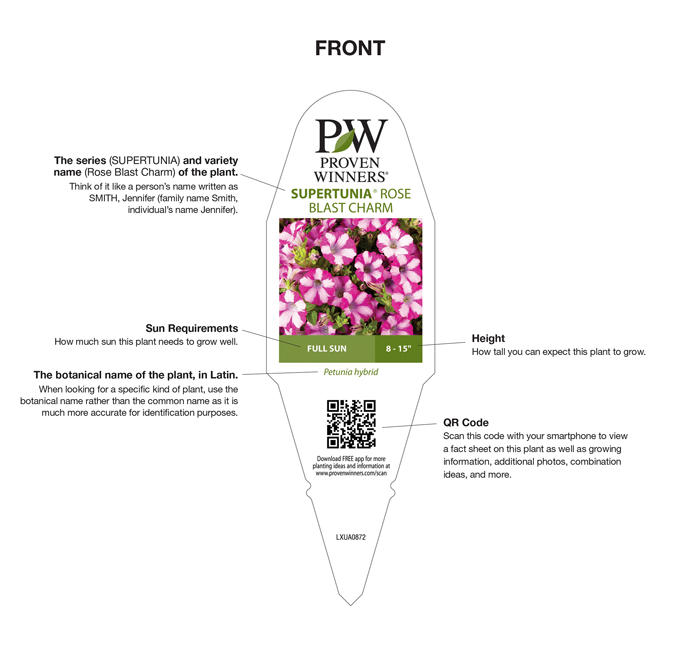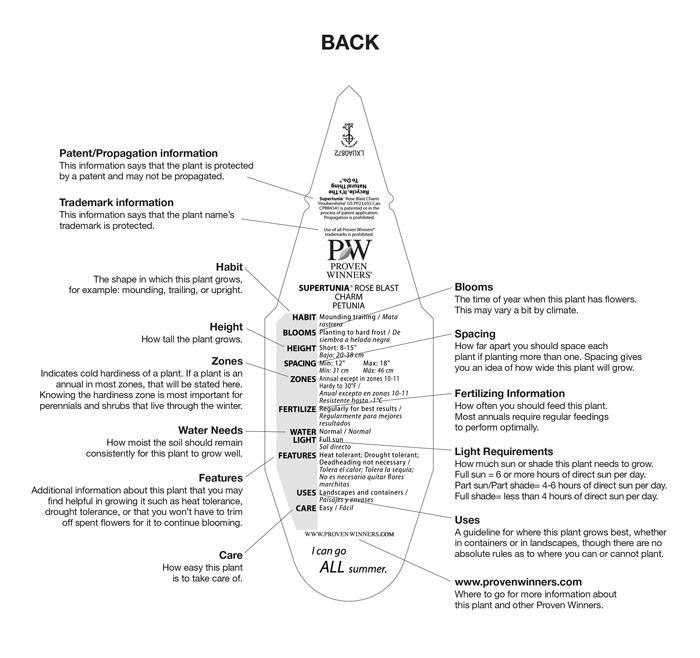At Security State Bank we love to get to know our customers and the passions they enjoy. This month it’s our turn to share some helpful information and tips on one of our favorite passions – gardening!
Whether you’ve been gardening for 20 years or two weeks, it never hurts to learn more about the plants in your landscape. One of the most valuable tools to gain insight about your developing flowers and shrubs is the plant tag that comes with them. While they each come in different shapes and sizes there are some key points to take note of!
SOURCE: www.provenwinners.com/learn/planting/how-to-read-a-plant-tag
Proven Winners provides in-depth tags to give you the most information possible, however, we’d love to showcase the top five areas you’ll want to be sure to take a look at!
Amount of Sun (LIGHT): This section typically indicates one of three options; full sun, part shade, shade. For plants requiring full sun, this generally means they need 8 hours of sun each day. For plants needing part shade, this indicates the plant does best when exposed to 4-6 hours of sun per day. For the select few shade plants, 4 hours of sun is their maximum, and any additional sun could potentially harm the plant.
Size (HEIGHT/SPACING): When planting shrubs or a growing garden, it’s important to know the approximate size each plant will reach. Shrubs that climb over 6 feet have the potential to block windows of your home, and herbs such as mint may stay low but could spread across the entire garden if you let it. As you can see, understanding the growth potential of your varieties can make a big impact on where you place them.
Time (ZONE): This area does require some slight research, but it well worth the effort. Here in Iowa, we are between zones 4b and 6a. These zones span across the U.S.A. and indicate where plants can thrive year-round, and where/when they give way to the cold for hardy and tender annuals. The information on the plant tag will typically state whether it is an annual or perennial and if it’s an annual which zones it can thrive in year round. For colder climates like us, it also states what temperature the plant can withstand, so you know when you clear out your landscapes come winter.
Season (BLOOM TIME): While structuring your landscape, you’ll want to choose shrubs and other perennials which showcase their colors throughout the year. Some may bloom in early spring, others in late summer, and still more that reach their prime at the start of fall. By taking advantage of a plant’s best season, you can ensure your garden catch the eye of passersby all year long.
Care Tips (FERTILIZE/WATER/FEATURES/USES/CARE): Each of these sections can provide helpful insight into the best practices when caring for a particular plant. For everything from water requirements, fertilizing frequency, and drought tolerance, these simple tips can help turn an average plant into some extraordinary!
We can’t wait to get our garden growing, but we’re even more enthused to see all of yours! If you have a landscape or flower patch worth sharing, be sure to post it on our Facebook page and share the tip or trick that helped you achieve it! We’d love to see our newsfeed full of colorful annuals and perennials!
If you’re still looking for additional information for your 2017 garden, Garden Answer is a great resource to peruse! Their video on plant tags can fill in any gaps we missed, and the videos throughout her channel offer great additional insight for the inspiring garden amateur or professional.
Well what are you waiting for – it’s time to get gardening!



